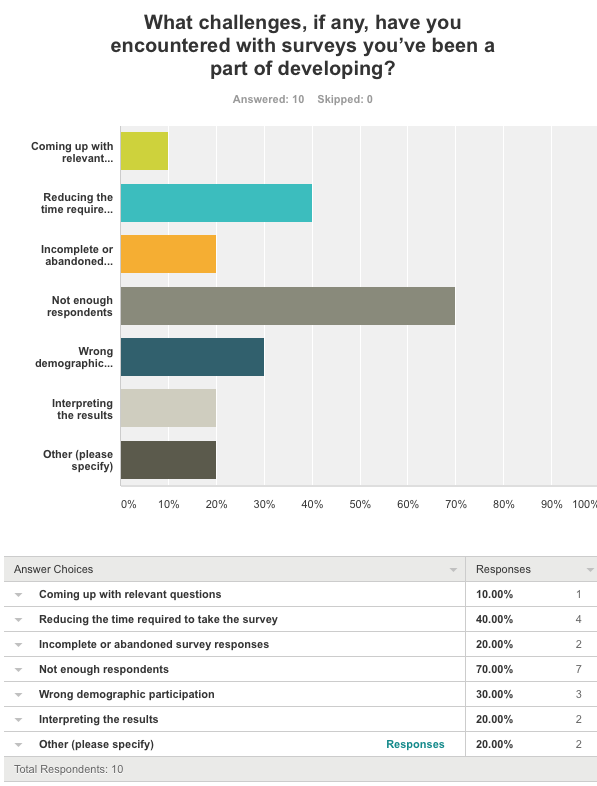You might have seen my very serious invitation about taking a marketing survey about marketing surveys recently. Since I have a lot of connections and friends involved in some form of technology marketing or analysis, I figured the results might be of interest to my audience. Here’s what I learned.
Most people are sick and tired of surveys. But that doesn’t mean they aren’t useful.
I shared the survey invite ONLY through social media – if you average out my number of friends on Facebook, contacts on LinkedIn, and followers of @bluefug on Twitter, removing duplicates that’s about 1600 unique individuals. I didn’t want to trouble my immediate contacts with the survey with an email in this case, though it would be the best practice for a survey if it served a business or research purpose.
Out of all that social media I got … drumroll … 10 survey responses.
That said, on Twitter I saw 25 retweets and likes, and dozens more likes and shares on LinkedIn and Facebook, just because a Survey of Surveys is kind of funny. I even heard from voke analyst and proper research survey guru Theresa Lanowitz that this idea was “very Seinfeldesque, like a coffee table book about coffee table books.”
So it wasn't taken seriously, but from an attention perspective, not bad. Let’s get into the results…
Go ahead and thumb through the slides above. Here's some of my takeaways from this exercise:
- Marketers large and small are still running a lot of surveys. I was surprised that 80% of the subjects reported running 2 or more surveys in a given year. Now, about half of these might be customer satisfaction surveys, which is a little more indirect but still an outcome often supported by marketing.
- We are cheapskates. We prefer free promotion of a survey over paid advertising and rewards. The leading methods of inviting people to take surveys are a simple blog post (70%), followed by social media and direct emails from the company's reps at (60%). And the leading incentive to participate is a free copy of the report (at 60%). Also 70% of the audience said they had zero budget set aside for these activities.
- By far, the number one challenge with surveys is that you never seem to get enough responses (70%). I'm right there with all of you on that! You could pay for more responses rather than being a cheapskate about the survey, but what value would paid responses add in some cases? In previous gigs, if I could get sales, customer support and our own email list working, I would push for at least 100, ideally 200 responses to get a statistically relevant field.
- Reported response rate to invitations and especially survey completion rates are a little higher than I expected, with 80% of marketers saying they get a 5% or higher rate of response. And 60% say they get 25% or better click-to-completion. Both of those questions, I assumed they would be rated on the low side.
Maybe this is a positive note for the good old marketing survey -- it doesn't seem to be going away anytime soon. If you can craft it carefully enough to be valuable research, and promote it personally and directly to a larger sample, you can still get a lot out of it. No matter what tools and methods you use for surveys, use them right, respect everyone's time in participating, and make sure to use every part of the awareness, data and conclusions you can draw from peer and customer input throughout your campaigns.

Question #6. This result was perhaps the most accurate one of the day.